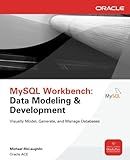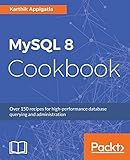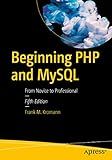Best MySQL Books and Resources to Buy in December 2025

MySQL Workbench: Data Modeling & Development (Oracle Press)
- AFFORDABLE PRICING ON QUALITY PRE-OWNED BOOKS.
- ECO-FRIENDLY CHOICE: REDUCE WASTE BY REUSING BOOKS.
- FAST SHIPPING ENSURES QUICK DELIVERY TO READERS.



MySQL 8 Cookbook: Over 150 recipes for high-performance database querying and administration



Sams Teach Yourself Oracle PL/SQL in 10 Minutes



SQL: A Beginner's Guide, Fourth Edition



MySQL: Comece com o principal banco de dados open source do mercado (Portuguese Edition)



Beginning PHP and MySQL: From Novice to Professional


MySQL triggers are database objects that can be set up to automatically perform actions when certain events occur within a database. These events can include INSERT, UPDATE, or DELETE statements executed on a specific table or view.
To set up and use a MySQL trigger, you need to follow a few steps:
- Define a trigger: Before creating a trigger, you must specify its name, the event that will activate it, and the table on which it will operate. For example, you might want to create a trigger that activates whenever a new row is inserted into a specific table.
- Specify trigger timing: You need to determine whether the trigger should be executed before or after the event that it is associated with. This timing can impact the order in which triggers are executed if multiple triggers are defined for the same event.
- Set the triggering event: After deciding the timing, define the event that will activate your trigger. It can be an INSERT, UPDATE, or DELETE statement performed on the chosen table.
- Define trigger execution code: Specify the actions that should be carried out when the trigger is activated. These actions can be simple SQL queries or complex stored procedures, depending on your requirements.
- Test and enable the trigger: Once the trigger is defined, you can test its functionality using various SQL statements. If it behaves as expected, enable the trigger to make it operational within the database.
- Modify or drop the trigger: If necessary, you can modify an existing trigger by altering its execution code, triggering events, or timing. Alternatively, you can remove the trigger entirely from the database using the DROP TRIGGER statement.
MySQL triggers are powerful tools that can automate tasks and enforce specific business rules within a database. By defining triggers to respond to specific events, you can maintain data integrity, implement complex workflows, and streamline database operations.
How to debug MySQL triggers?
Debugging MySQL triggers can be done by following these steps:
- Ensure that the trigger is created and activated correctly. Make sure that there are no syntax errors in the trigger code.
- Enable the trigger logging feature in MySQL. You can do this by setting the log_bin_trust_function_creators variable to 1 in the MySQL configuration file. This step is essential for viewing trigger-related errors in the MySQL error log.
- Use SELECT statements inside the trigger code to check the values of variables, columns, or tables at specific points during trigger execution. You can use SELECT ... INTO statements to assign the selected values to variables, and then output them using SELECT statements. This will help you understand the flow of data and identify any discrepancies.
- Utilize the MySQL error log to find any error messages related to triggers. You can access the error log by checking the mysqld.err file or by using the SHOW VARIABLES LIKE 'log_error' command to get the path to the error log file.
- Temporarily disable parts of the trigger code to narrow down the issue. Comment out sections of the trigger code and run the trigger again to pinpoint the specific code causing the problem. Gradually uncomment and run sections until the issue occurs again.
- Utilize MySQL's SIGNAL statement to raise your own custom errors inside the trigger code. This can be helpful in identifying specific problem areas or conditions that are not being met.
- Make use of MySQL's debugging tools, such as the DEBUG option and SET statements to output debug information during trigger execution. For example, you can use SET @debug_variable = 'debug info'; and then output its value with a SELECT statement.
- Test the trigger with different scenarios and data sets to ensure it behaves as expected. Use various inputs and examine the corresponding outputs to verify the trigger's correctness.
By following these steps, you should be able to identify and resolve any issues in your MySQL triggers.
What happens to triggers when a table is dropped in MySQL?
When a table is dropped in MySQL, all the triggers associated with that table are also dropped. Dropping a table permanently removes the table, its data, and all its related constraints, indexes, triggers, and privileges. Therefore, it is important to be cautious when dropping tables as it cannot be undone.
What considerations should be made when using triggers in a multi-user environment in MySQL?
When using triggers in a multi-user environment in MySQL, there are several considerations that should be made:
- Performance impact: Triggers can have a significant impact on database performance, especially if they are complex and involve extensive processing. It is important to carefully analyze the performance impact of triggers, especially in high-traffic environments, to ensure that they do not negatively affect the overall database performance.
- Scalability: Triggers can impact the scalability of a database system. As the number of users and concurrent transactions increases, the execution of triggers can become a bottleneck. It is crucial to design triggers in a way that is efficient and scalable to handle the expected workload.
- Data consistency: Triggers can be used to enforce data integrity constraints by automatically updating or validating data before or after certain operations. However, in a multi-user environment, it is essential to ensure that triggers do not cause data inconsistency issues. Care should be taken to handle concurrent transactions and ensure that triggers maintain data consistency at all times.
- Concurrency control: Triggers can also impact concurrency control in a multi-user environment. They can introduce additional locks on the data being modified, potentially leading to contention and decreased concurrency. It is vital to evaluate the impact of triggers on concurrency control and make sure they do not create unnecessary bottlenecks or conflicts among concurrent transactions.
- Security: Triggers could potentially execute arbitrary code, so it is crucial to ensure that appropriate security measures are in place. Only trusted and authorized users should have the permission to create or modify triggers. Additionally, the code within triggers should be carefully reviewed and tested to prevent any security vulnerabilities or unauthorized actions.
- Maintenance and debugging: Triggers can make the database schema more complex and can be challenging to maintain and debug. It is essential to follow best practices for trigger design, such as keeping them simple and focused, using descriptive and understandable code, and documenting the purpose and behavior of each trigger.
- Testing and validation: Triggers should be thoroughly tested and validated in a multi-user environment to ensure that they function as intended. Care should be taken to cover various scenarios and edge cases, including concurrent transactions, to ensure the correctness and reliability of triggers.
Overall, using triggers in a multi-user environment requires careful consideration of performance, scalability, data integrity, concurrency control, security, maintenance, and testing. It is essential to design and implement triggers in a way that minimizes their impact on the system, ensures data consistency, and provides the desired functionality without compromising performance or security.
How to prevent recursive triggers in MySQL?
To prevent recursive triggers in MySQL, you can follow the following steps:
- Identify the triggers that are causing the recursion: One way to identify the triggers causing recursion is to check the trigger definitions and the logic they are implementing.
- Modify the logic in the triggers to break the recursion: Within the trigger logic, you need to add conditional statements to determine when to stop the recursion.
- Use the OLD and NEW keywords: The OLD keyword refers to the values of the columns before the update, and the NEW keyword refers to the values after the update. By using these keywords, you can determine if the trigger needs to be executed or not.
- Limit the trigger to a specific event: Specify the trigger to fire only on specific events, such as INSERT, UPDATE, or DELETE, rather than on any operation.
- Use stored procedures: Instead of using triggers directly, use stored procedures to handle the necessary operations. This allows you to have more control over the flow and logic, reducing the chances of recursion.
- Set a global variable: By using a global variable, you can keep track of the trigger execution and prevent recursion. Set the variable at the beginning of the trigger and check its value before executing the trigger logic.
- Analyze the trigger dependencies: If you have multiple triggers that are causing recursion due to their interdependencies, it might be necessary to modify or reorder the triggers to break the cycle.
- Avoid unnecessary triggers: Only create triggers when absolutely necessary. Unnecessary triggers can increase the chances of recursion and impact performance.
It is crucial to thoroughly test the modified triggers to ensure they function correctly and do not result in unintended recursive behavior.
What are the different trigger events in MySQL?
In MySQL, trigger events are actions that can activate a trigger. The different trigger events in MySQL are:
- BEFORE INSERT: This trigger event is fired just before a new row is inserted into a table.
- AFTER INSERT: This trigger event is fired just after a new row is inserted into a table.
- BEFORE UPDATE: This trigger event is fired just before a row is updated in a table.
- AFTER UPDATE: This trigger event is fired just after a row is updated in a table.
- BEFORE DELETE: This trigger event is fired just before a row is deleted from a table.
- AFTER DELETE: This trigger event is fired just after a row is deleted from a table.
- BEFORE REPLACE: This trigger event is fired just before a row is replaced in a table.
- AFTER REPLACE: This trigger event is fired just after a row is replaced in a table.
- BEFORE INSERT ON DUPLICATE KEY UPDATE: This trigger event is fired just before a new row is inserted into a table, but if a duplicate key conflict occurs, it will also trigger the update action.
- AFTER INSERT ON DUPLICATE KEY UPDATE: This trigger event is fired just after a new row is inserted into a table, but if a duplicate key conflict occurs, it will also trigger the update action.
These trigger events allow developers to perform certain actions automatically when specific events occur in the database.
How to enable or disable triggers in MySQL?
To enable or disable triggers in MySQL, you can use the DISABLE or ENABLE keyword along with the TRIGGER statement. Here's the syntax for both enabling and disabling triggers:
- To disable a trigger:
DISABLE TRIGGER trigger_name ON table_name;
Replace trigger_name with the name of the trigger you want to disable, and table_name with the name of the table the trigger is associated with.
- To enable a previously disabled trigger:
ENABLE TRIGGER trigger_name ON table_name;
Again, replace trigger_name with the name of the trigger you want to enable, and table_name with the name of the table associated with the trigger.
Note that you need appropriate privileges to enable or disable triggers on a table.
